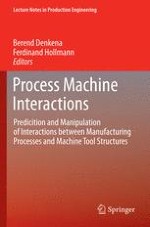2013 | Buch
Process Machine Interactions
Predicition and Manipulation of Interactions between Manufacturing Processes and Machine Tool Structures
herausgegeben von: Berend Denkena, Ferdinand Hollmann
Verlag: Springer Berlin Heidelberg
Buchreihe : Lecture Notes in Production Engineering
